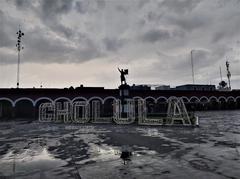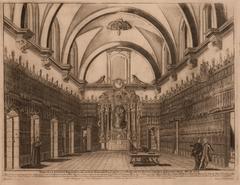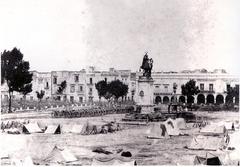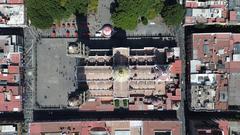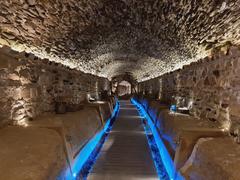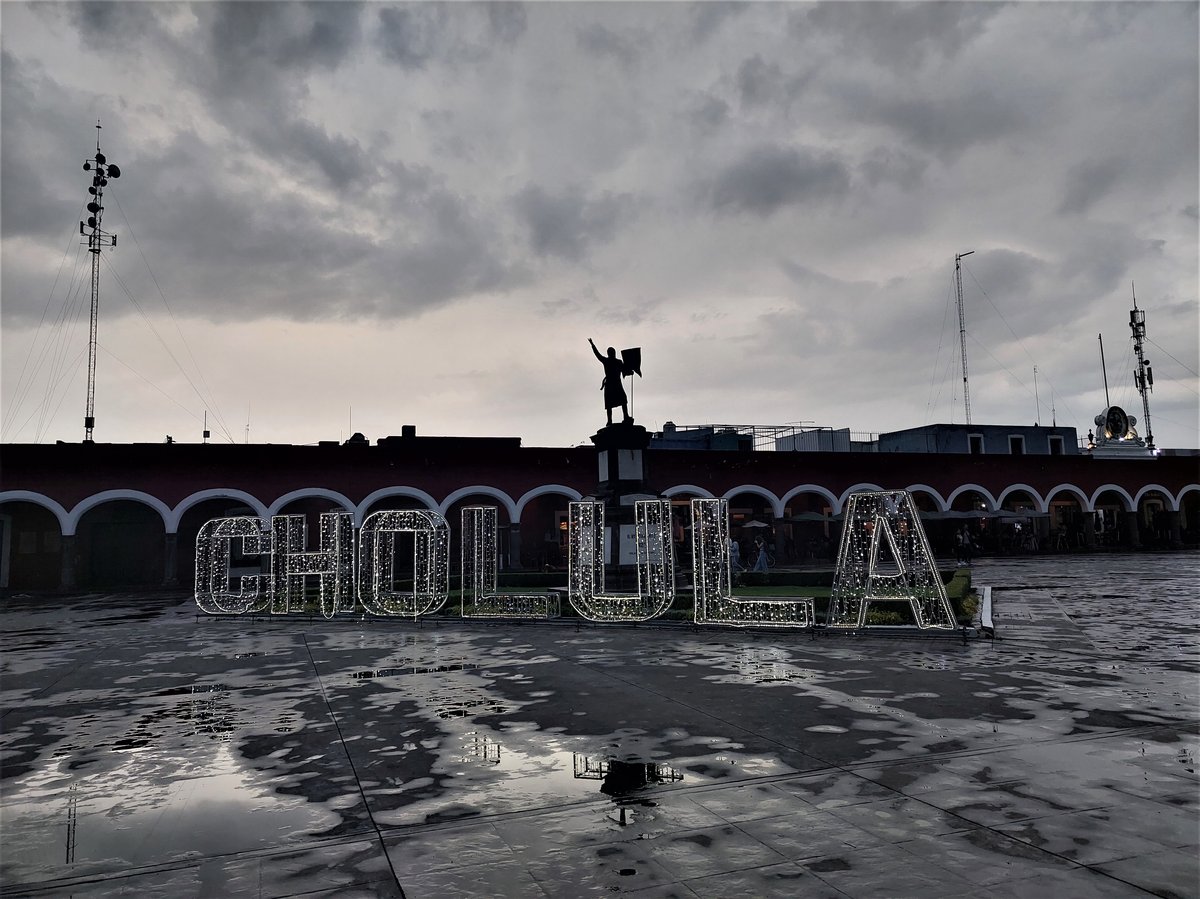
Visiting Fuente de San Miguel Arcángel: Hours, Tickets, and Tips in Puebla, Mexico
Date: 17/07/2024
Introduction
The Fuente de San Miguel Arcángel, located in the heart of Puebla, Mexico, is a landmark that encapsulates the rich confluence of history, culture, and religion in the region. Constructed in 1777 during the Spanish colonial era, this Baroque-style fountain is not only an architectural marvel but also a vital piece of Puebla’s urban and social fabric (INAH). Its central statue of Saint Michael the Archangel defeating a dragon is a vivid representation of the Catholic Church’s triumph over evil, a theme prevalent in Baroque art and an enduring symbol of the community’s religious devotion (Puebla Travel). Situated in the Zócalo, Puebla’s main square, the fountain has served as a crucial public water source and a focal point for community gatherings and celebrations. Over the centuries, the Fuente de San Miguel Arcángel has undergone various restoration efforts to preserve its historical and architectural integrity, ensuring it remains a beloved landmark for both locals and tourists (UNESCO). Today, it stands as a testament to Puebla’s historical and cultural heritage, drawing visitors who marvel at its intricate design and historical significance. This comprehensive guide aims to provide you with all the essential information you need to make the most of your visit to this iconic site.
Table of Contents
- Introduction
- History of Fuente de San Miguel Arcángel
- Modern-Day Relevance
- Visitor Information
- FAQ
- Conclusion
- Sources
History of Fuente de San Miguel Arcángel
Origins and Construction
The Fuente de San Miguel Arcángel was constructed in 1777 under the direction of Bishop Francisco Fabián y Fuero. It was part of a broader initiative to provide public water sources to the city’s inhabitants, reflecting the Spanish colonial administration’s efforts to improve urban infrastructure (INAH).
Architectural Significance
The fountain is an exemplary piece of Baroque architecture, featuring intricate stone carvings and a central statue of Saint Michael the Archangel depicted triumphantly defeating a dragon. The use of cantera stone, a volcanic rock native to the region, adds to the fountain’s historical and architectural value (Puebla Travel).
Historical Context
The construction of the Fuente de San Miguel Arcángel occurred during a period of significant growth and development in Puebla. By the 18th century, Puebla was a thriving urban center known for its religious, economic, and cultural significance. The fountain symbolized the city’s prosperity and the Catholic Church’s influence (UNESCO).
Role in Urban Development
Strategically placed in the Zócalo, the city’s main square, the fountain provided a reliable source of water for residents. It also became a focal point for community gatherings and celebrations, further cementing its importance in the city’s social fabric (Puebla Government).
Cultural and Religious Significance
Saint Michael the Archangel holds a special place in Catholic tradition. The fountain has been a site for various religious ceremonies and processions, particularly during the feast of Saint Michael on September 29th. These events highlight the enduring cultural and religious significance of the fountain to the people of Puebla (Catholic Online).
Preservation and Restoration
The Fuente de San Miguel Arcángel has undergone several restoration efforts to preserve its historical and architectural integrity. The most significant restoration took place in the early 20th century, led by the National Institute of Anthropology and History (INAH). These efforts have ensured that the fountain remains a vital part of Puebla’s cultural heritage (INAH).
Modern-Day Relevance
Influence on Local Art and Culture
The Fuente de San Miguel Arcángel has influenced local art and culture, inspiring numerous artists and craftsmen in Puebla. The fountain is frequently depicted in local artwork and has been the subject of various literary works, reflecting its deep-rooted presence in the cultural consciousness of Puebla’s residents (Puebla Cultural Institute).
Visitor Information
Visiting Hours
The Fuente de San Miguel Arcángel is accessible to the public 24 hours a day, but the best time to visit is during daylight hours to fully appreciate its architectural beauty.
Ticket Information
There is no admission fee to visit the Fuente de San Miguel Arcángel, making it an attractive option for budget-conscious travelers. However, guided tours that include the fountain as part of a broader exploration of Puebla’s historical sites may require tickets.
Travel Tips
- Best Time to Visit: Early morning or late afternoon to avoid crowds and capture the best photographs.
- Accessibility: The Zócalo is wheelchair accessible, but the uneven cobblestone streets may present challenges for some visitors.
- Nearby Attractions: Puebla Cathedral, Amparo Museum, and Casa de los Muñecos are all within walking distance.
Special Events
The Fuente de San Miguel Arcángel is often the center of various cultural and religious events, especially during the feast of Saint Michael on September 29th. These events offer a unique opportunity to experience local traditions and the fountain’s cultural significance.
Guided Tours
Several guided tours are available that include the Fuente de San Miguel Arcángel. These tours provide valuable historical context and are led by knowledgeable guides. Check with local tour operators for schedules and prices.
Best Photographic Spots
For the best photos of the Fuente de San Miguel Arcángel, consider these tips:
- Angle: Capture the fountain with the Puebla Cathedral in the background for a stunning shot.
- Lighting: Visit during the golden hour (shortly after sunrise or before sunset) for the best natural lighting.
- Details: Focus on the intricate carvings and the statue of Saint Michael for close-up shots.
FAQ Section
What are the visiting hours for Fuente de San Miguel Arcángel? The fountain is accessible 24 hours a day, but it’s best to visit during daylight hours.
Are there any guided tours available for Fuente de San Miguel Arcángel? Yes, several guided tours include the Fuente de San Miguel Arcángel. Check with local tour operators for details.
What is the best time to visit Fuente de San Miguel Arcángel? Early morning or late afternoon to avoid crowds and capture the best photographs.
Conclusion
The Fuente de San Miguel Arcángel stands as a testament to Puebla’s rich history and cultural heritage. Its construction in the 18th century marked a significant period of urban development and religious influence in the city. Over the years, the fountain has remained a vital part of Puebla’s social and cultural landscape, symbolizing the enduring legacy of the city’s colonial past. Through ongoing preservation efforts, the fountain continues to be a cherished landmark, offering a glimpse into the historical and architectural splendor of Puebla (UNESCO).
Whether you are a history enthusiast, an art lover, or simply a traveler looking to explore Puebla’s rich heritage, a visit to the Fuente de San Miguel Arcángel promises to be a fulfilling experience. For more detailed insights and travel tips, consider joining a guided tour or exploring other nearby attractions like the Puebla Cathedral, Amparo Museum, and Casa de los Muñecos (Visit Mexico).
Sources
- INAH. (n.d.). https://www.inah.gob.mx/
- Puebla Travel. (n.d.). https://www.pueblatravel.com/
- UNESCO. (n.d.). https://whc.unesco.org/en/list/416/
- Visit Mexico. (n.d.). https://www.visitmexico.com/
